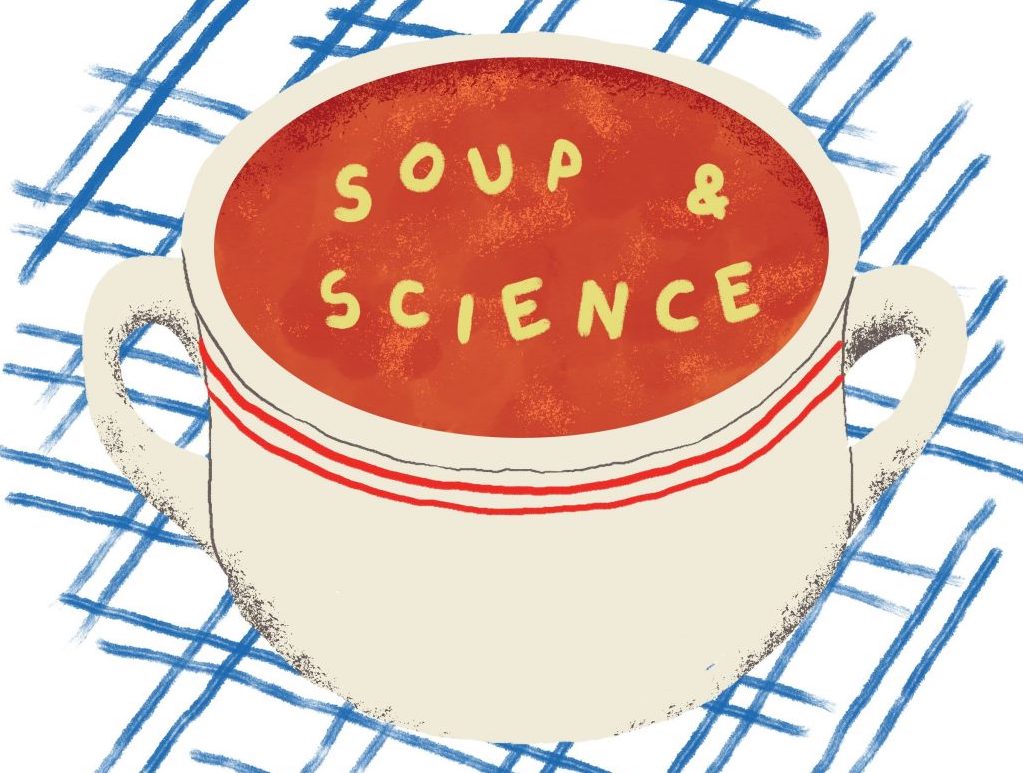On the week of Feb. 1, the Faculty of Science hosted the 31st edition of the beloved Soup and Science series in a five-day virtual event. Professors from various departments gave short presentations about their research and interacted with online attendees in break-out rooms.
The McGill Tribune brings highlights of the event, with talks from Elliot Paquette, Bärbel Knäuper, and Marc-André Légaré.
Random matrices model diverse statistics
Elliot Paquette, an assistant professor in the Department of Mathematics and Statistics, studies probability with a focus on random matrix theory.
When certain matrices—arrays of numbers in rows and columns—are multiplied with a vector, a quantity with magnitude and direction, the result can be represented as a product of the same vector and a single number called an eigenvalue. Inputting random values into matrices is a way to model complex problems found in quantum mechanics and number theory.
This technique, called random matrix theory, was developed in the 20th century when physicist Eugene Wigner discovered that the energy levels of large atoms could be modelled using eigenvalues of large matrices containing randomly generated numbers. These energy levels are the characteristic frequencies of electromagnetic radiation absorbed or emitted by an atom.
“If you take the energy levels of [for example] Erbium and plot them and look at the spaces, you can see a distribution which is well-matched by the predictions of random matrix theory,” Paquette said. “Sufficiently big matrices just tend to look like random ones, and you can use that for lots of things.”
Paquette explained how predicted distributions of random eigenvalues can be observed in stock data, where they can condense large amounts of data to better anticipate changes in stock prices. Likewise, when machine learning algorithms are modelled as complicated matrices, their eigenvalues can be used to fine-tune the algorithms for increased performance.
Trimming the fat off expensive weight-loss programs
Bärbel Knäuper, a professor of Health Psychology at McGill, studies innovations in behavioural weight loss programs that help prevent obesity-related complications including type 2 diabetes, hypertension, and cancer.
Currently, the gold standard of weight-loss interventions that lead to clinically significant weight loss is year-long intensive behavioural programs delivered in one-on-one sessions. However, such programs can be unaffordable to many.
“The research we are doing in my lab is really focussed on ways to make the programs cheaper so that they can be delivered to more people,” Knäuper said.
One goal is to identify which techniques in existing programs are key components that drive weight loss results. Another facet of Knäuper’s research is matching interventions with the specific needs of individuals.
“For example, people who eat in response to negative emotions [do not tend to benefit from] control-based techniques,” Knäuper said. “For those populations, we are developing programs that [focus on] higher awareness of how one eats and changing one’s attitude to food and eating.”
Knäuper’s vision is that weight loss services can be delivered in a “stepped” care approach.
A patient would begin by using a cheap and accessible eHealth tool, and progress to online group programs, in-person group programs, and finally one-on-one programs only if the previous steps were unsuccessful.
Sustainable catalysts spark a reaction
Marc-André Légaré, a newly hired assistant professor of Chemistry, investigates how industrial approaches to chemistry can become more sustainable.
One of the 12 principles of green chemistry is catalysis—activating a chemical process with catalysts, small molecules that are not consumed in the reaction and decrease the amount of activation energy required for the reaction to occur.
One challenge to performing green chemistry is that common catalysts are often transition metals, as classified on the periodic table. Since transition metals are rare, extracting and transporting them contributes to pollution, and their high cost discourages chemical industries from adapting catalytic processes.
“In terms of sustainability, this is a problem,” Légaré said. “So [instead], my group is trying to use abundant main group elements and turn them into potent catalysts”.
Transition metals are potent catalysts because their atoms uniquely contain both electron-rich and electron-poor regions, which together manipulate the molecular bonds of other substances in the reaction.
One approach Légaré has adopted is binding electron-rich and electron-poor main group elements so that together they can imitate the effect of a transition metal.









